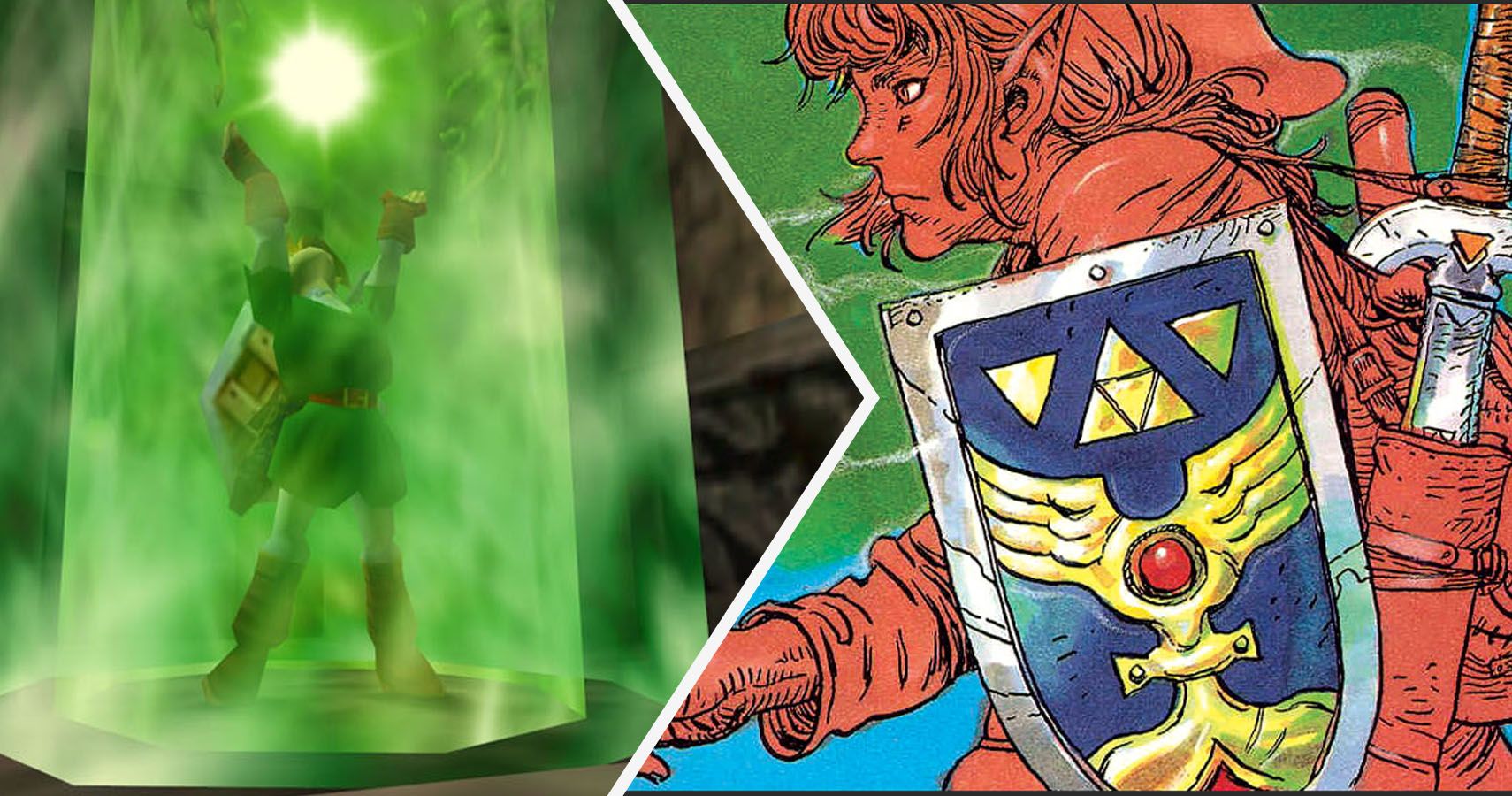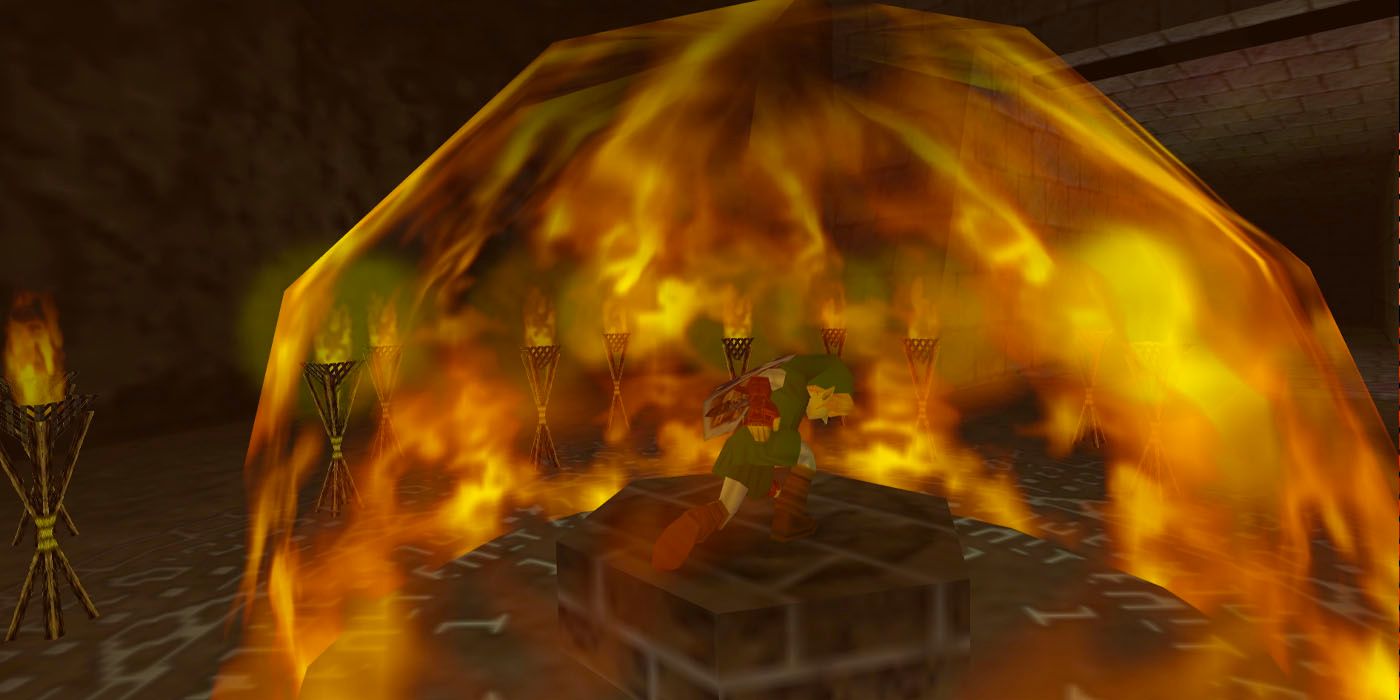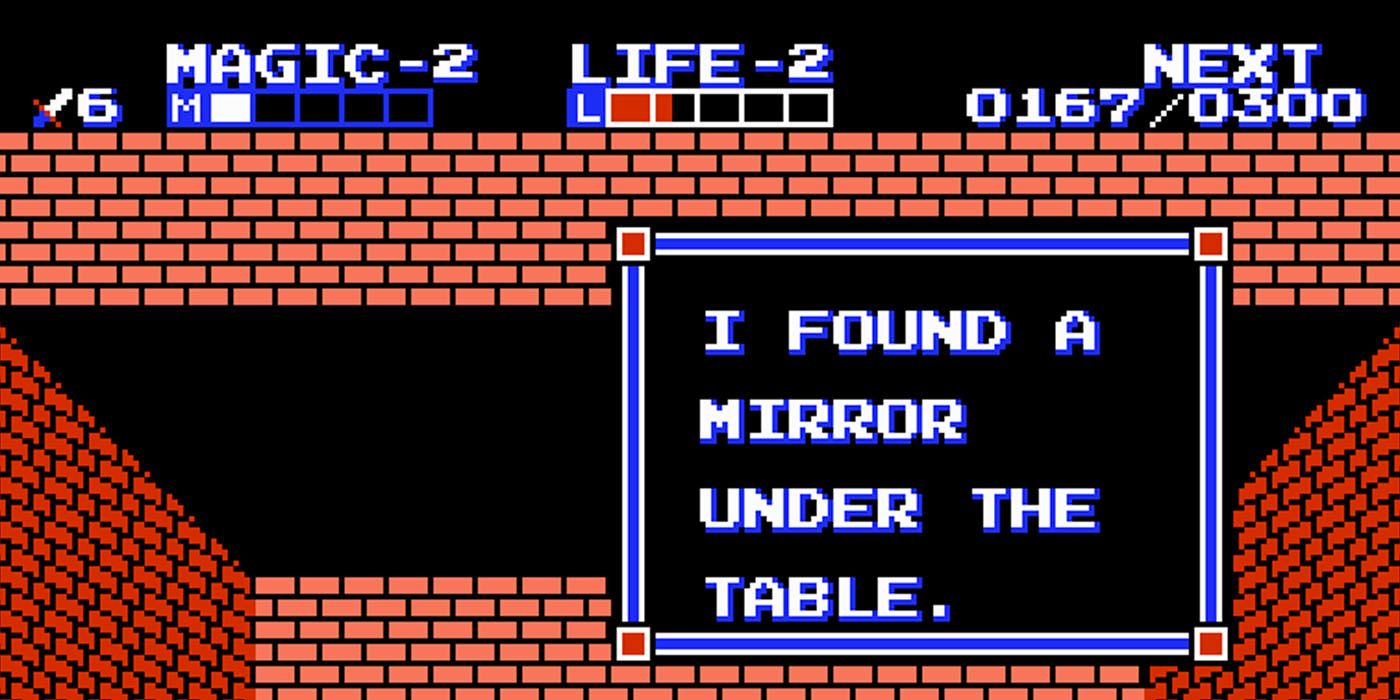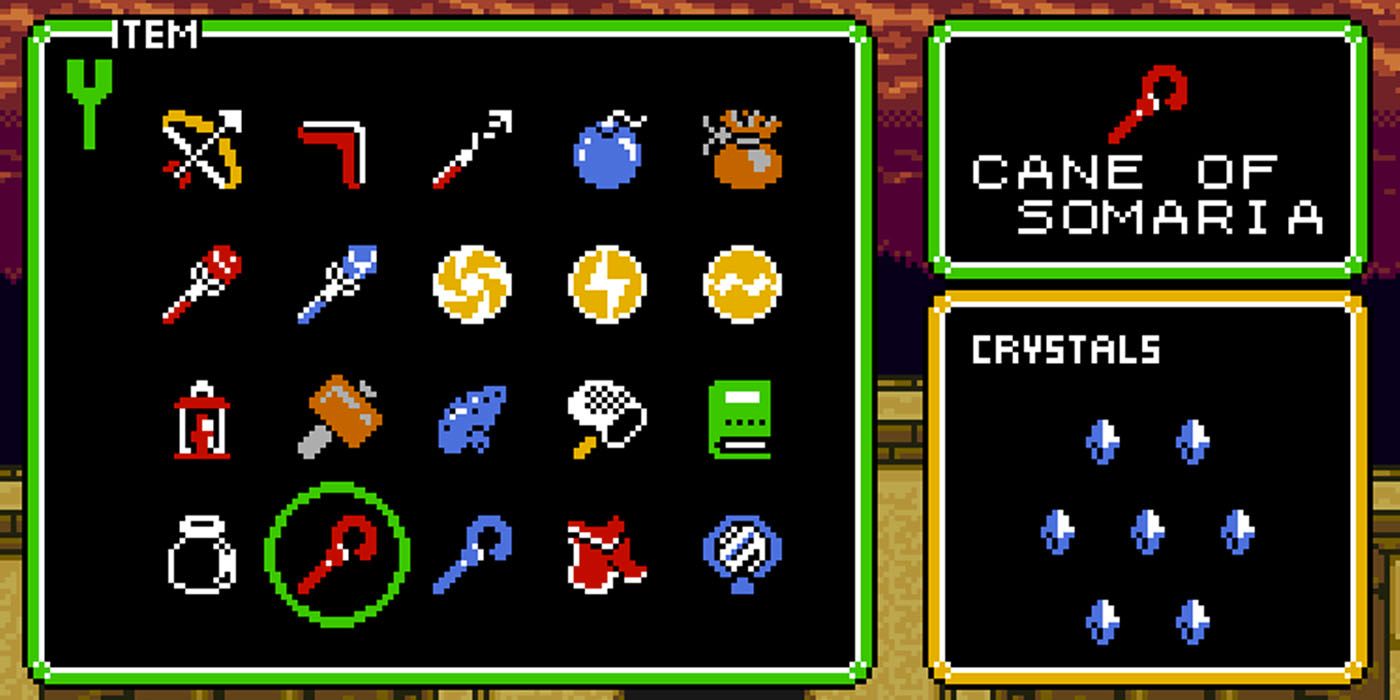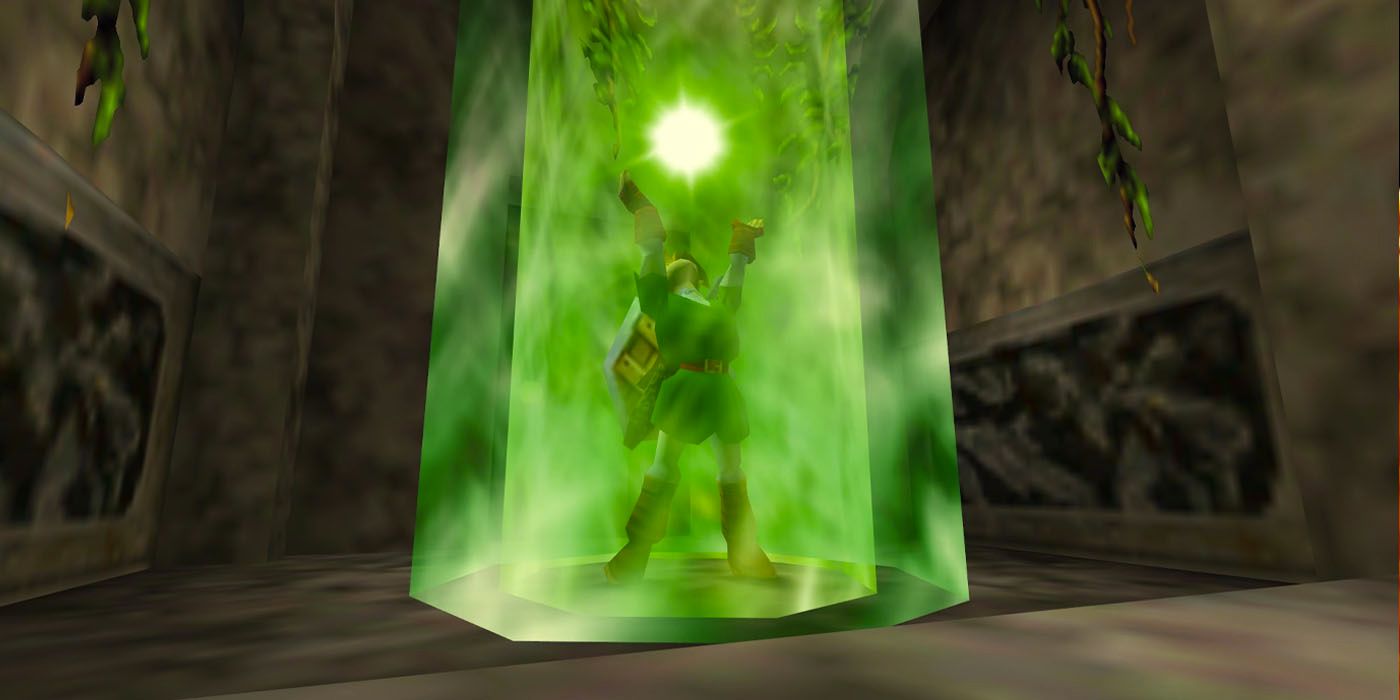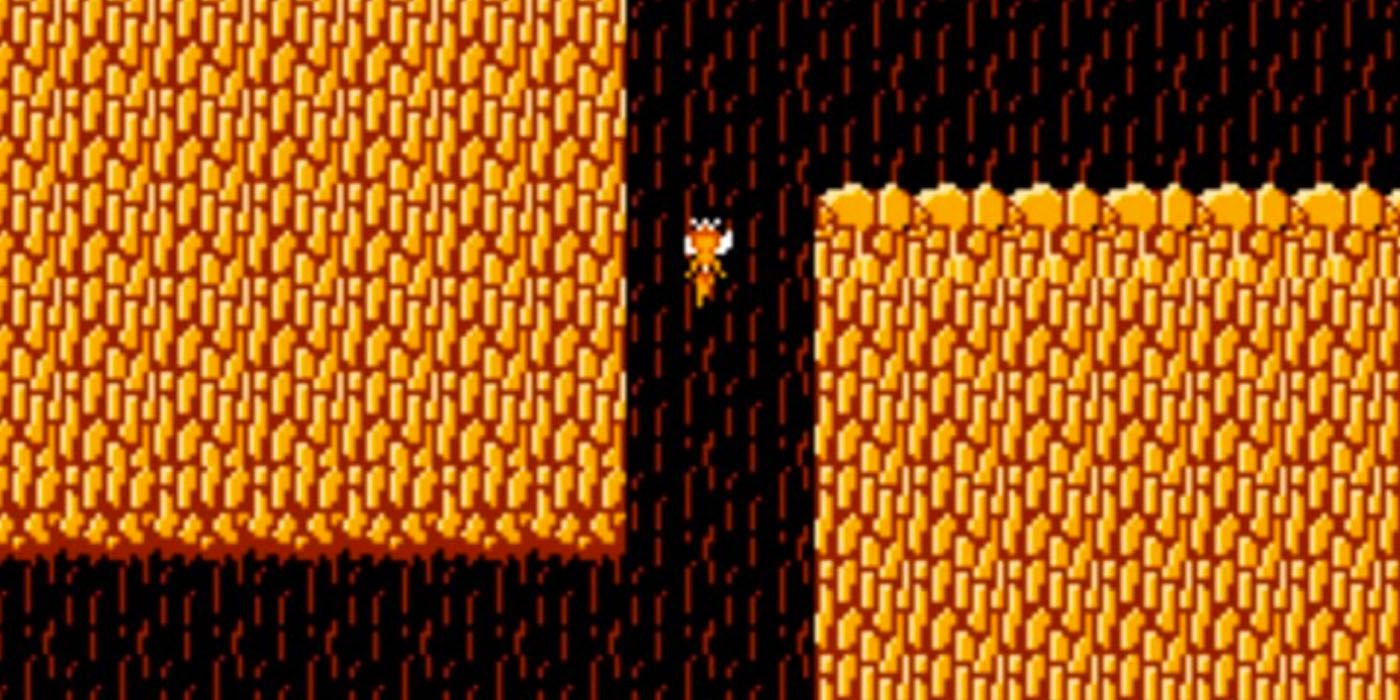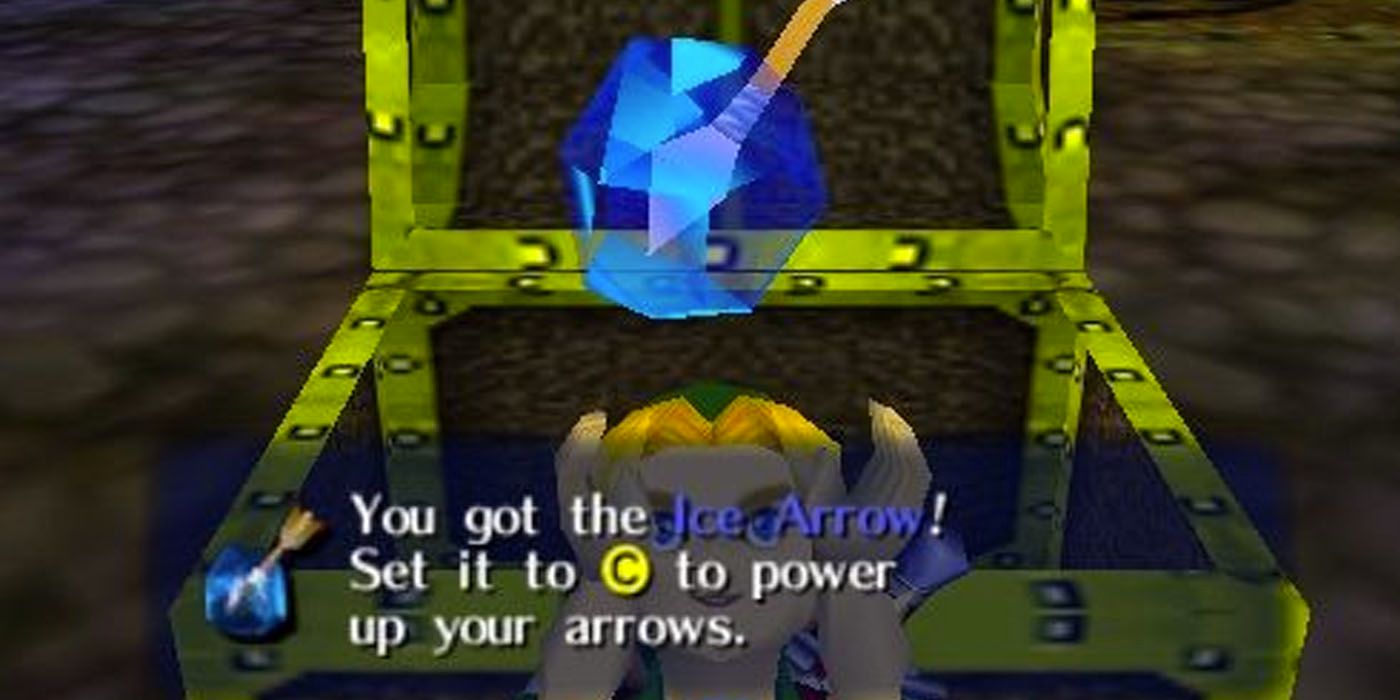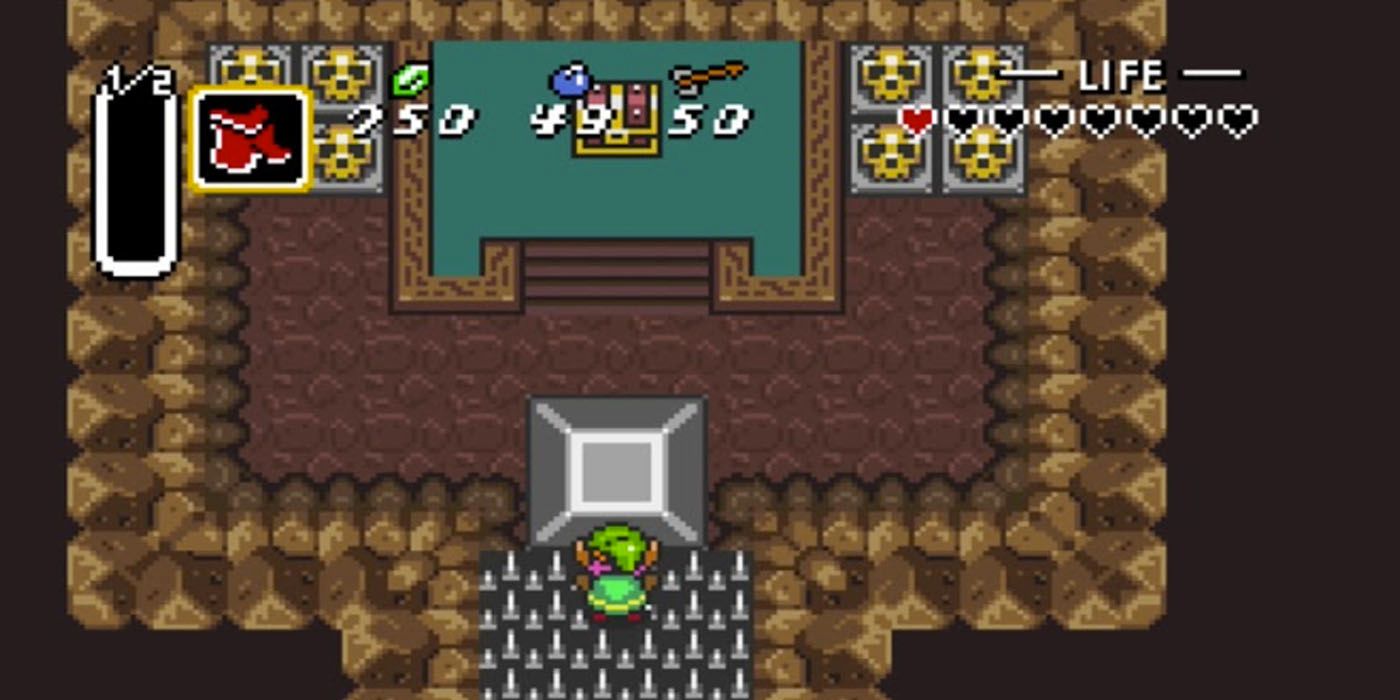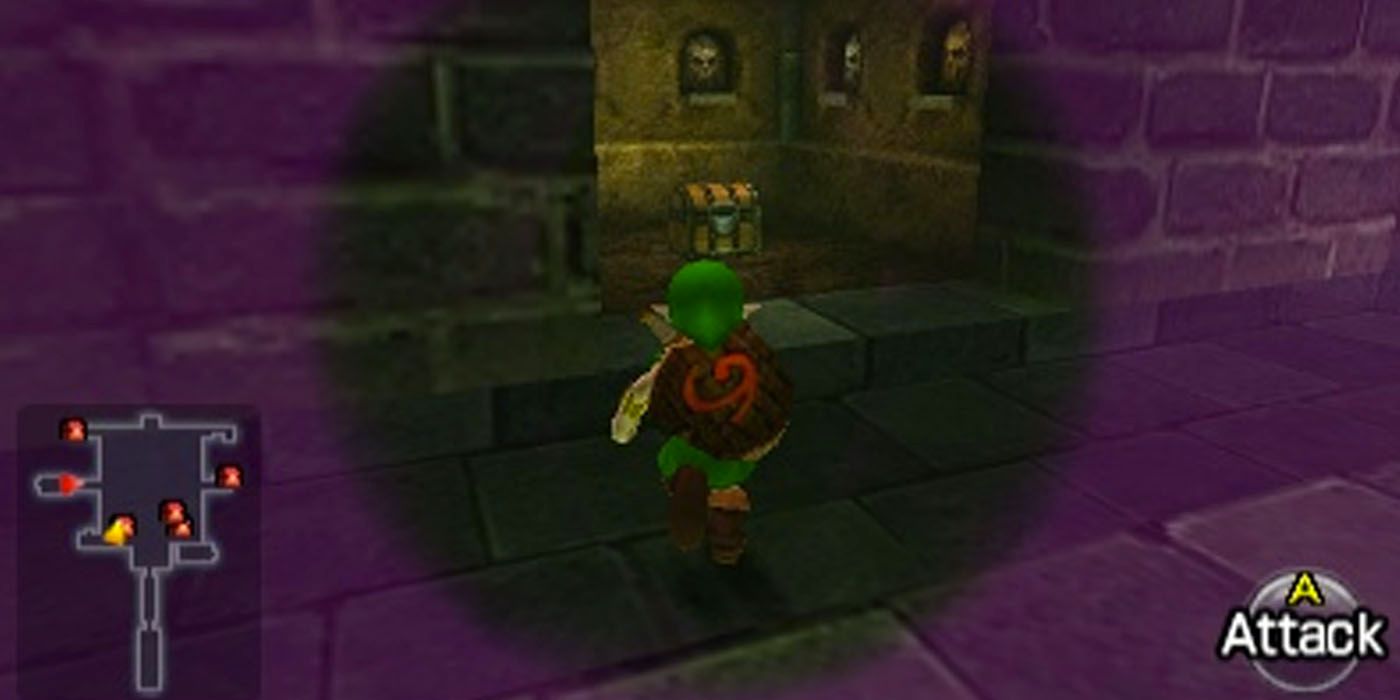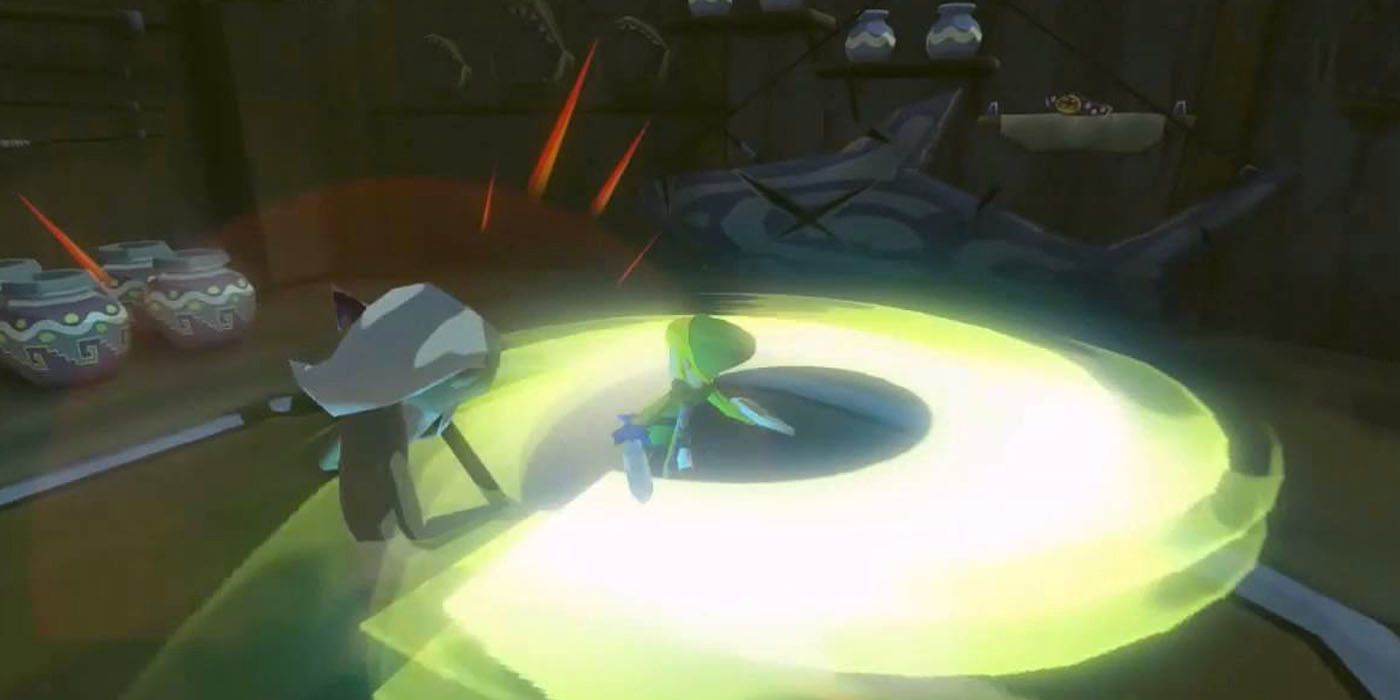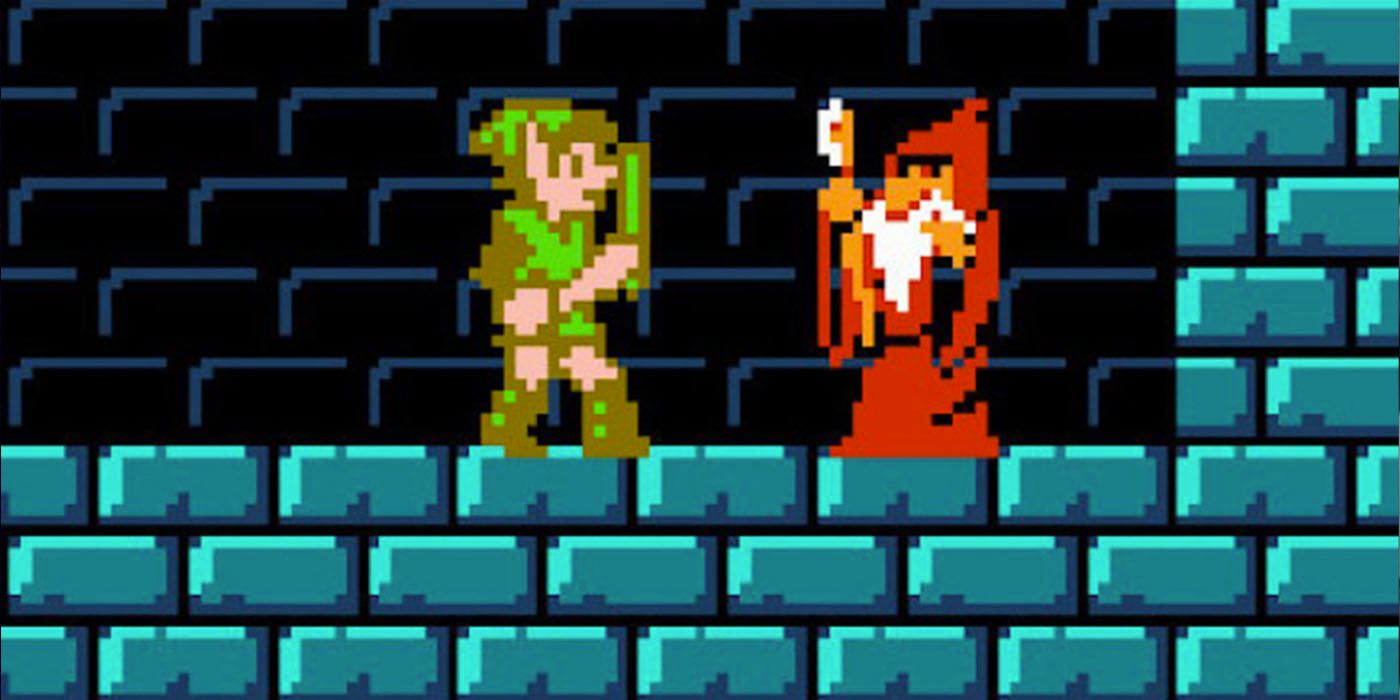Magic certainly has a role and plays its purpose in The Legend of Zelda, but it’s not a tool the franchise offers Link all too often. Although magic was introduced in Zelda II: The Adventure of Link and remained a home console staple for years, Twilight Princess would remove magic altogether while Skyward Sword & A Link Between Worlds would rebrand the mechanic.
That said, stamina simply isn’t a proper replacement for the series’ magic. Magic in The Legend of Zelda has a history of offering Link some of his strongest attacks– with spells that rival the Master Sword in usefulness.
10 Din’s Fire (Ocarina Of Time)
Din’s Fire is the first magic spell Link will have access to in Ocarina of Time. Upon clearing Dodongo’s Cavern, Link will be directed up Death Mountain. At the top, Kaepora Gaebora will advise him to meet the Great Fairy before bringing Link back down to Kakariko Village. For as early as Din’s Fire is unlocked, it’s actually extremely powerful.
Din’s Fire is one of the Link’s strongest spells in the game, period. While young Link won’t have the magic necessary to take frequent advantage of the attack, adult Link can have his magic meter doubled after clearing the Fire Temple. Interestingly, there’s evidence in the Shadow Temple to suggest Din’s Fire is a repurposed Fire Medallion.
9 Life (Zelda II: The Adventure Of Link)
Zelda II has the most robust magic system in the franchise, actually making it an active part of the gameplay loop on a level other titles in the series seldom allow. This is done primarily through the game’s difficulty curve. Enemies not only require quick reflexes, but an adept mind that understands & experiments with Link’s spells.
Located in the Water Town of Saria, Link can learn Life magic from a Wise Man by finding a woman’s mirror in town. Life is by far the most useful spell in the game, if only because of all the punishment Link will take. It’s also one of the most costly and locks at a rather staggering 50 MP.
8 Cane Of Somaria (A Link To The Past)
Magic isn’t just useful for combat, and while that’s the role magic ultimately took on as the franchise went on, games like A Link to the Past made an active effort at ensuring magic could serve puzzle solving purposes. The Cane of Somaria is Misery Mire’s dungeon item and can be used to manifest blocks out of thin air.
This becomes especially useful during switch puzzles, outright allowing Link to circumvent some of the harder ones in the game (including a particularly nasty one found in the Ice Palace.) Unsurprisingly, the Cane of Somaria reappears in the puzzle-heavy Oracle of Ages.
7 Farore’s Wind (Ocarina Of Time)
Farore’s Wind is one of the most underrated magic spells in the franchise. Found in a hidden cave behind Lord Jabu-Jabu, a Great Fairy will bestow onto Link Farore’s Wind. A spell in the same vein as Din’s Fire, Farore’s Wind allows Link to create warp points within dungeons so long as he’s found the dungeon map.
While Farore’s Wind is often used as a means of exiting dungeons mid-game, it’s far more useful in the hands of players who understand level geography. Farore’s Wind can make getting through the Water Temple a breeze if players plant warps inside of the water level rooms.
6 Fairy (Zelda II: The Adventure Of Link)
One of the most expensive spells in the game, Fairy allows Link to turn into a Fairy, keeping him in that form until he exits the screen he’s on. While this prevents him from picking up items or fighting back, Link can completely avoid most of the game’s hardest combat and platforming challenges.
It perhaps goes without saying, but Fairy is fairly costly, even at the end of the game. It’s also mandatory for completing all six Palaces. To learn Fairy, Link needs to bring the Water of Life (found in a cave north of Saria) to the Harbor Town of Mido.
5 Ice Arrows (Majora’s Mask)
Magic Arrows were first introduced in Ocarina of Time, but they’re not integrated into the gameplay and puzzle solving as well as they could have been– more an optional bonus in the cases of the Fire and Ice Arrows. Not so for Majora’s Mask, which makes each Arrow a key dungeon item.
In the Nintendo 64 release specifically, the Ice Arrows could be used to make platforms on any surface of water. There was a great deal of experimentation & variety with how Link could proceed through the Great Bay Temple. As a combat bonus, Ice Arrows even freeze enemies while doing a decent amount of damage.
4 Cane Of Byrna (A Link To The Past)
Unlike the Cane of Somaria, the Cane of Byrna is entirely optional. That said, this arguably only makes the item even more useful. Where the Cane of Somaria makes puzzle solving an easier process, the Cane of Byrna makes combat easier (basically functioning as Zelda II’s Shield and a proto version of Nayru’s Love/Magic Armor.)
The Cane of Byrna is found at the end of a cave south of Ganon’s Tower in the Dark World. The puzzles inside are simple enough for how late the Cane will naturally be found, but Link will need the Magic Cape & Power Glove to proceed. Not only does the Cane of Byrna protect Link, it actually damages enemies in the process.
3 Lens Of Truth (Ocarina Of Time)
The Legend of Zelda has never shied away from dark storytelling (Link’s Uncle dies mere minutes into A Link to the Past, after all,) but the Nintendo 64 games took greater advantage of the mature tone the franchise had been developing. There are times where Ocarina of Time spills into full on horror, in particular the Bottom of the Well.
Quite literally bloodstained (only in the Nintendo 64 release) Link must brave a torture chamber to find the Lens of Truth, a lens with a clear connection to the Sheikah that can reveal unseen secrets. It’s a tool with dark implications surrounding it, and just looking through the lens drains Link’s magic.
2 Hurricane Spin (The Wind Waker)
Introduced in A Link to the Past, the Spin Attack quickly became an iconic & essential part of Link’s skill set. Every game since has allowed for Link to make use of the iconic technique, but there have been some notable variations. Ocarina of Time augmented the technique with two tiers of magic, while The Wind Waker took things one step further.
The last home console Zelda to feature a magic meter, The Wind Waker’s Spin Attack can develop into the Hurricane Spin if Link gives Orca 10 Knight’s Crests. The Hurricane Spin takes up much and briefly dizzies Link, but it deals an incredible amount of damage multiple times at barely any magic cost.
1 Thunder (Zelda II: The Adventure Of Link)
The Thunder spell is the most powerful in Zelda II, but it’s not exactly practical– if only because of its massive spell cost. For most of their magic meter, players can summon a thunderstorm that pulverizes enemies on-screen. Thunder is also necessary for defeating Thunderbird, the game’s penultimate boss.
To learn Thunder, Link needs all four Magic Containers from the overworld. Link must then travel to the Hidden Town of Kasuto, learn Spell, and then go to the abandoned Kasuto where he’ll be able to find the final Wise Man and learn Thunder. Worth noting is that players can enter the Great Palace without having learned Thunder, but they won’t be able to beat the game.

